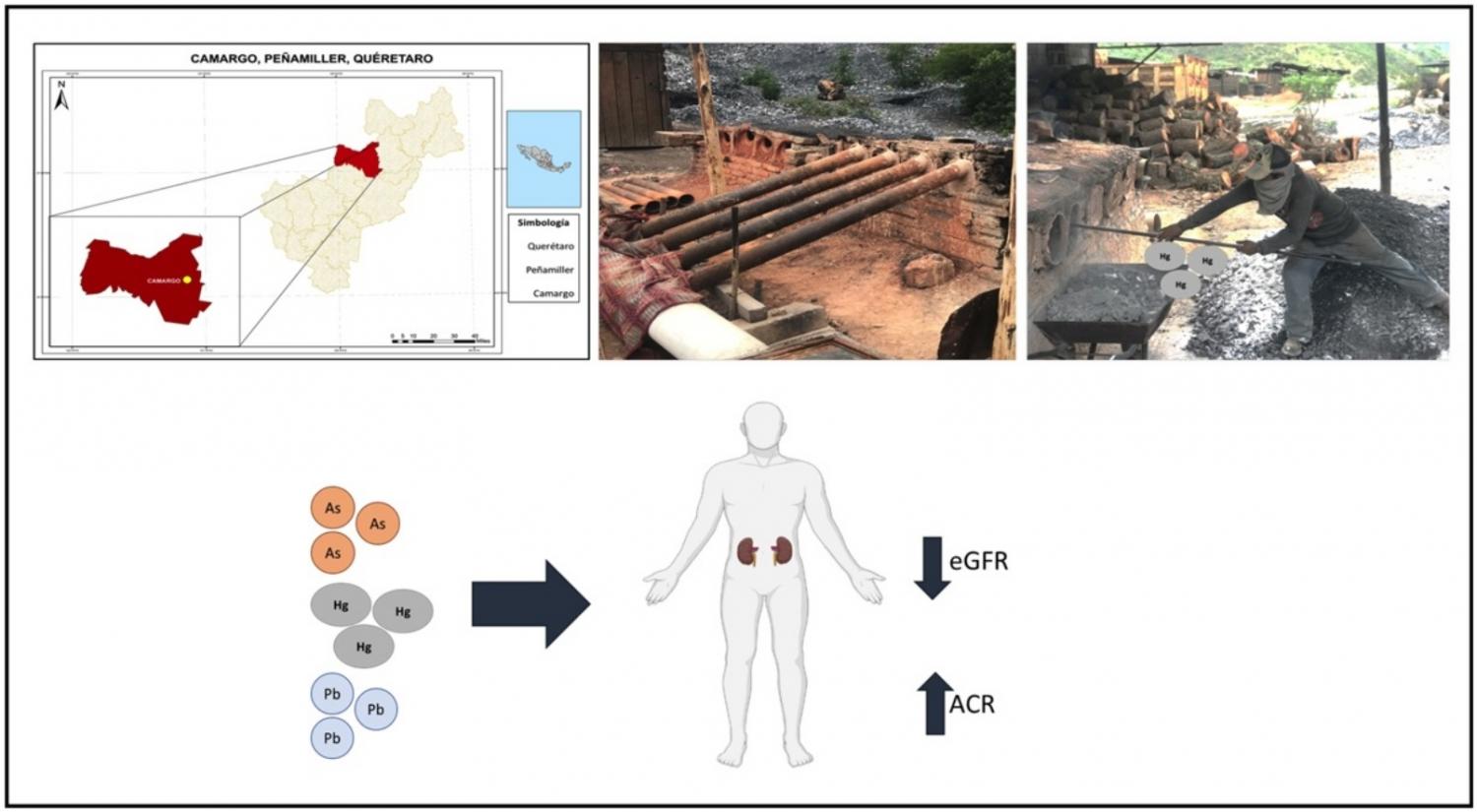
Mercury mining is one of the main sources of mercury (Hg) release into the environment, causing serious impacts on human health and the environment. Workers in these mines are employed informally and precariously and therefore lack labor rights such as social security. The objective of the study is to make visible the exposure to environmental contaminants and the health of workers in mercury mines. An environmental assessment was conducted to determine workers' exposure to contaminants; urine samples were obtained to measure exposure to mercury and arsenic, and blood samples were obtained for lead and cadmium. Clinical parameters were also evaluated. Concentrations of Hg, As and Pb were determined in soil, 279.4 mg/kg (24.4−788.5), 14.7 mg/kg (9.5−20.3) and 1.4 mg/kg (1−2.8), respectively. The exposure results for mercury were 551 μg/g creatinine, for arsenic 50 μg/L and for lead 4.7 μg/dL. Cd-B was not found. In addition, 17.6 % of the workers had diabetes and 17.6 % had renal disorders. Principal Component Regression was performed obtaining an r2 of 0.86 for glomerular filtration rate and 0.54 for albumin creatinine ratio using clinical, occupational, and metal exposure variables. Exposure to Hg in this type of mine is not exclusive, so there is a cumulative risk of chronic exposure to different environmental pollutants directly impacting the health of workers. It is necessary to implement health strategies and different work opportunities for these workers.
